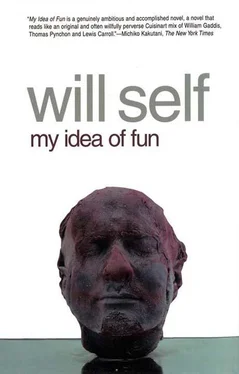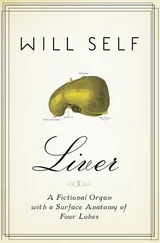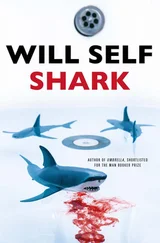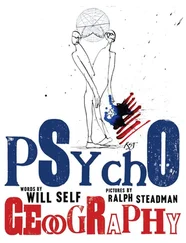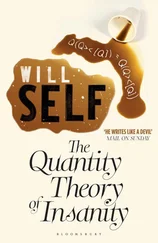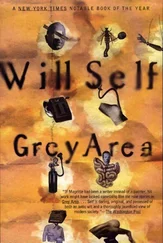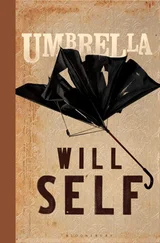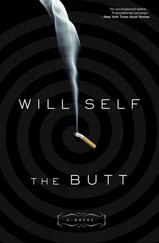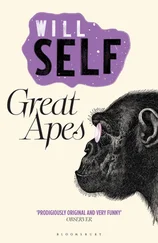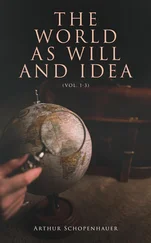Ian veered off the roundabout, down a path that led in the general direction of Norman House. The path became a passageway that traversed a bomb site between two high wooden fences. To the left of the fence the site had been cleared and building work was in progress, hard hats and JCBs were grunting and grubbing in the dirt, but the site to the right of the fence hadn't been cleared yet. Through chinks in the fence Ian could see a tangle of stringy privet, lanky nettles, wild flowers and triffid weeds, all forming a fuzz of camouflage over the sunken foundations of the bombed-out building. He took a deep breath and sighed. What a marvellous morning to be so stylishly suited and on his way to a stylish job.
Norman House, which contained the offices of D. F. & L. Associates, was set between two similar, somewhere to the north of the twisted rectangle formed by Old Street, City Road, London Wall and Shoreditch High Street. In truth, the only thing Norman about the building was the pseudo-Bayeux lettering on the doorplate that proclaimed ‘Norman House’. Otherwise it was an undistinguished six-storey smogscraper, faced in London brick, its eighteen rectangular windows projected out by double surrounds of leading and yellow stonework.
Ian bounded up the three steps to the glass doors and pushed them open. In the cramped vestibule by the lift, he encountered Dave, the porter, with his hairy chest oozing up from behind his collar, like some mutant merkin.
‘Morning, Mr Wharton,’ said Dave.
‘Morning, Dave,’ said Ian, punching the lift-call button.
‘Going to be another hot one today.’
‘So they say, so they say.’
The lift doors peeled back on the third floor to reveal the reception area of D.F.& L. Behind a brushed steel bulwark, Vanda, the statuesque black receptionist, sat stroking the keys on her Merlin console. The laquered busby of her hair hid a combined mouth-and-earpiece set, so that, to Ian, it appeared as if she were talking to some spirit guide, deeply familiar with the London club scene.
‘Morning, Vanda.’
‘Morning, Mr Wharton.’
Ian barrelled through the reception area and headed on up the stairs. The decor of the D.F.& L. suite was unremarkable, beige-corded carpets and utilitarian strip lighting. The walls were hung with framed display advertisements the agency had been responsible for commissioning, alongside various marketing-award certificates. Set here and there, on the stairs, along the corridors, were freestanding glass cabinets, filled with other kinds of awards. These were symbolic bibelots, pseudo-products. Brushed steel and cedarwood pediments jostled on their baize bottoms, pushing forward on spindles of acrylic tiny metalicised examples of packaging, little rubber stoppers, assortments of diminutive clips, valves and widgets. In amongst them Ian spotted the award given to D.F.& L. for one of its most successful campaigns, the Painstyler.
The Painstyler was a kind of tool, that could be used by amateur decorators to tease the surface of a particularly thick, plaster-enriched brand of paint into a landscape of petrified fronds. The Painstyler — God knows why — had caught on in a major way. The D.F.& L. billings had been massive, and, as an expression of gratitude, Hal Gainsby, the American senior partner, had the entire offices painstyled. Every single ceiling and vertical surface was fluffed up in this manner, so that to progress around the corridors was to feel one's self to be some kind of human bolus, being peristalsised along a giant gut.
The employees couldn't abide the painstyled surfaces, which were by way of being a hideously itchy incentive to the scratching and picking of apathetic fingernails. No desk or work station in the whole suite was without its accompanying snowfall of chipped-off paint fragments. This progressive distressing of the office environment sent Gainsby into bubbling furies; some employees had their wages docked, others were fired. The very success of the Painstyler had started to scrape away at the corporate fabric.
Ian Wharton absorbed all of this and looked out for fresh little snowfalls as he bowled down the corridor towards the fifth-floor conference room. He pushed the heavy door open and confronted his colleagues.
Together with Hal Gainsby there were Patricia Weiss, Customer Account Manager; Geoff Crier, Media Buyer; and Simon Arkell, Planner. Gainsby, a plump little man who endlessly sought out any point of potential height-advantage, was on top of the air-conditioning unit, set beneath the rectangular window. His rear end pincered by its two slabs, he was being subjected to a chilly blast, and as his fashionable Barries’ shirt turned into a chilly shroud, he bitterly regretted the posture.
That was Gainsby all over. He was a man whose millisecond to millisecond disposition was bounded by posture regret. The most obvious form of this was physical, but it extended through his career, on to his anglophilia, and terminated in a sadly pointless emotional loneliness. As it goes, the same was true for the rest of them, these other three marketeers.
Patricia Weiss was a German-Jewish bombshell, an antithetical Leni Riefenstahl. Her swarthy face was hidden behind a life mask of thick caramel foundation. Her big eyelids were enpurpled, their faux lashes gooey with mascara; her severe lips were raw red and a lurid beauty pimple formed a trigonometric point on the hard plain of her cheek.
If Weiss's jewellery indicated membership of a yet-to-be-created tribe of millennarian Amazons, her couture was contrawise: a set of vampish relics left over from the fifties. Under a black cuirass jacket there was no blouse, only a heavily reinforced brassière that coned her breasts into Strangelove projectiles. Weiss's legs were thrust beneath the blond-wood conference lozenge, but anyone could have told you that her stockings were sheer, sheer, sheer, and that her legs were sheerer still. Her skate-blade feet were rapacious and violent to look at, spiked by patent leather at toe cap and high-heel.
Gainsby may have been sad, but Patricia Weiss thought herself a truant from feeling and that was worse, far worse. Originally married to a bibulous Big Blue manager, she had left the Havant household under a hail of blows from the pissed brute. Then he had the gall to hit her in the divorce court with a desertion rap. The judge was a misogynist and delivered the kids to Daddy and destruction. Consumed with self-hatred Patricia blew for London and had a butterfly tattooed in her groin. The boy and girl were now six and nine respectively. She couldn't stand the blame in their eyes when she fought her way back in to see them. At the bottom of her meticulous heap of hair, the idea fermented that only another child could save her, a new birth.
Patricia tried to be tough and sexy. She vamped men in, vogued them, cranked them up and then vroomed them out again. But each new coupling brought only fresh despair. Inside her marvellous chest a post-coital she-spider feasted on her dead man's heart.
Geoff Crier reminded Ian of Hargreaves, his tutor at Sussex. Crier had the same all-over brown beard, which strongly implied the necessity of a daily razure around his raw eyes. He was a throwback to the dandy Ogilvy days of British advertising when copywriters, marketing men, even people in production, sported colourful bow ties, and affected the manners of artists who chanced to be commercial. Crier was none too bright. Life, he contended, kept on crossing the road when it saw him coming. In his late-forties now, the oldest of the three, he was beginning to grow ungracefully young and chippy, like an adolescent on the make. His girlfriend couldn't have been said to be long-suffering. For she was blissfully unaware of how the Crier frustration was strained through the colander of his personality, until all that was left was a stock of watery pretension.
Читать дальше
